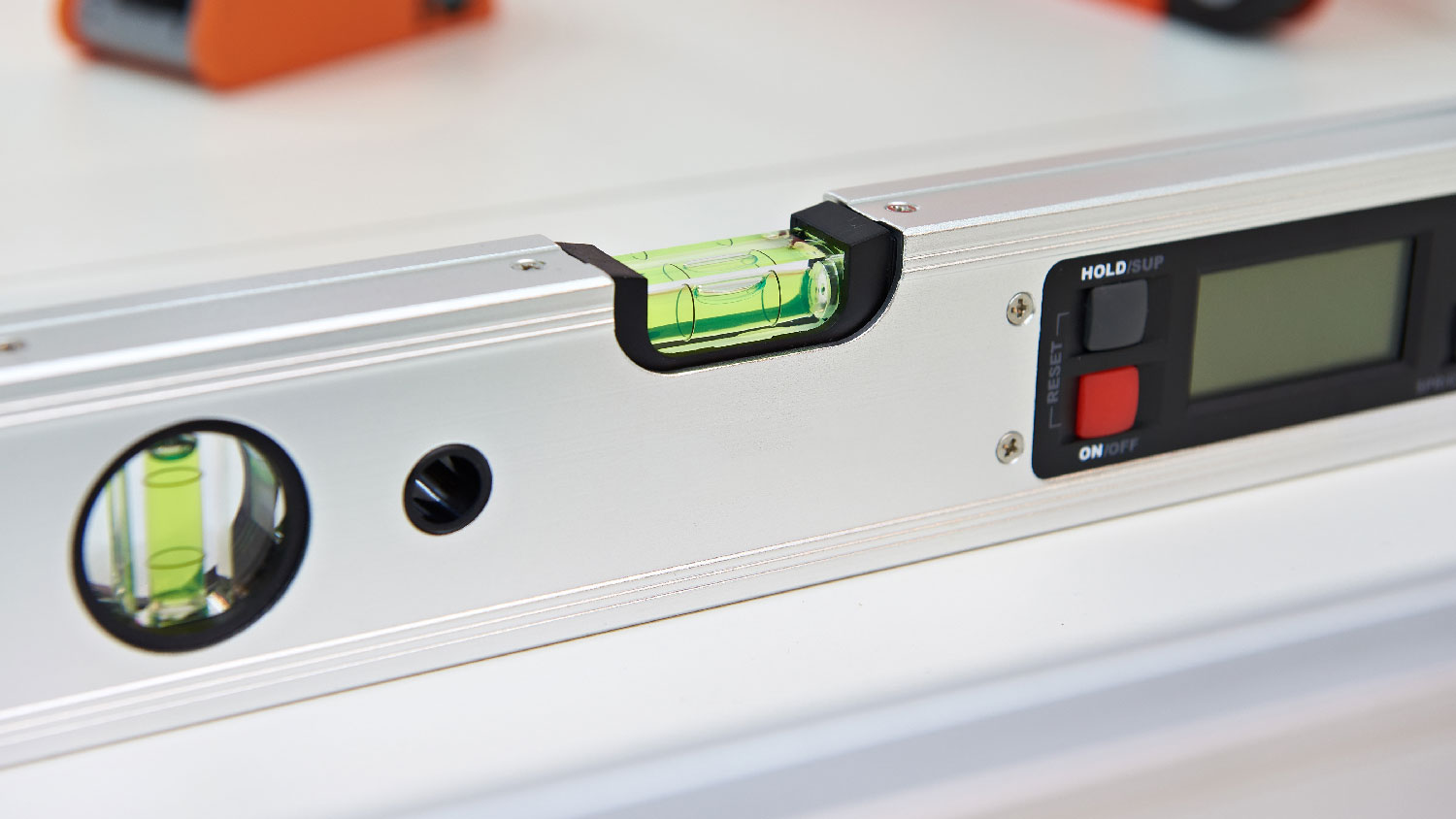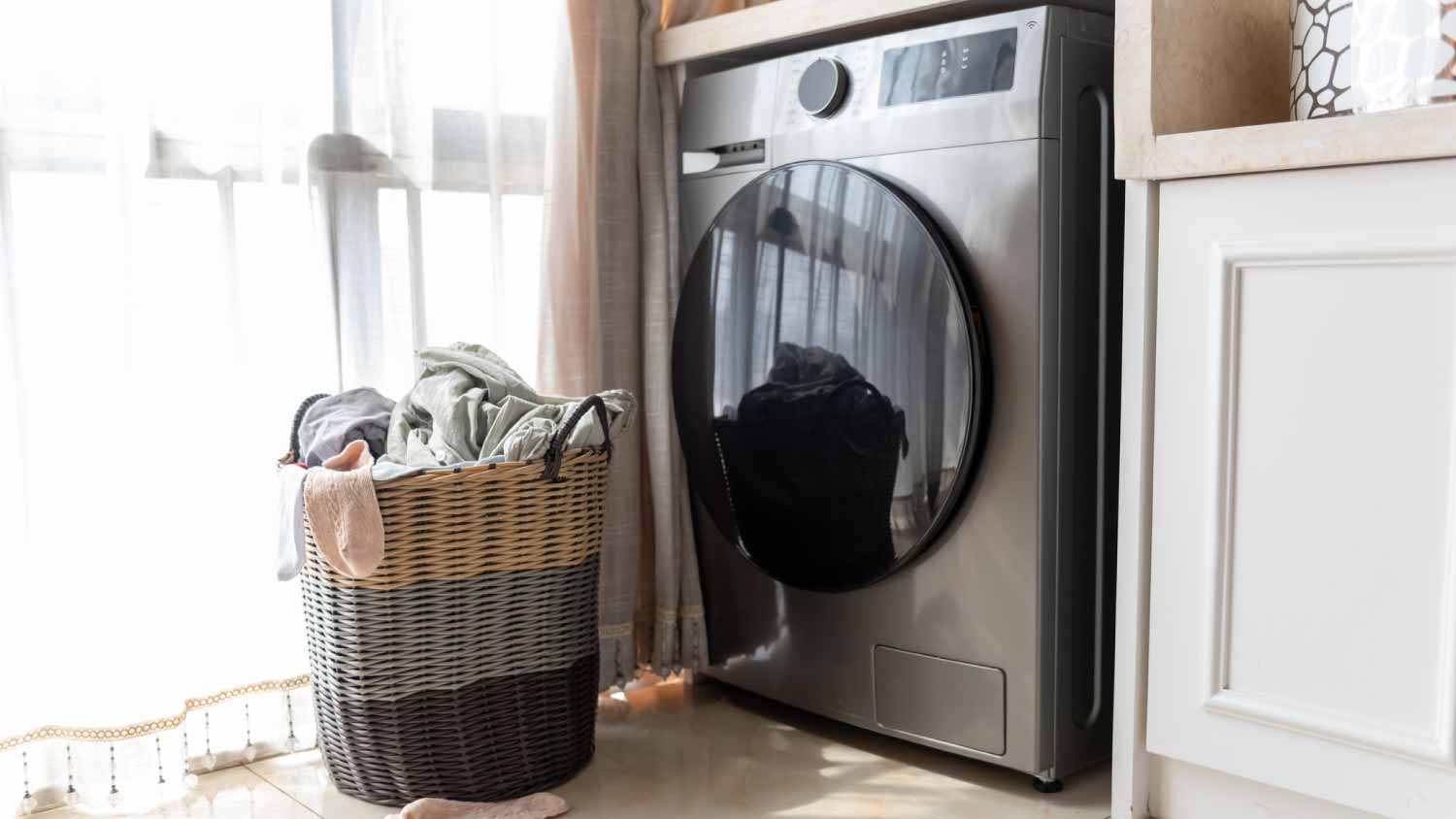Washing Machine Shaking Violently? 4 Reasons Why
Shaking your clothes clean is so last century


Washing machine repairs cost between $125 and $450 on average.
A shaking washing machine can require a simple adjustment or professional repair.
The age of your washing machine can direct you toward the solution.
Unbalanced loads can lead to premature washing machine failure.
Does it feel and sound like a train is crashing into your home whenever you wash your clothes? If your washing machine is shaking violently when you run a load of laundry, it's essential to determine the problem to avoid making the situation worse. Regardless of the type of washing machine your household relies on, the issue could be as simple as an unbalanced load or as complex as failed components within the appliance.
1. Unbalanced Load
The most common reason a washing machine shakes during the spin cycle is that the laundry load inside is out of balance. The shaking can often be violent enough to make the washer move across the floor. This problem is common, especially when trying to wash a large comforter, sheets, pillows, or extra-bulky clothing. However, it can also happen with almost any type of mixed load.
How to Fix It
To fix an unbalanced load, pause the machine and redistribute the contents. Redistributing the load simply means evenly portioning your articles around the drum for top-loading machines.
Front-loading machines can also run into unbalanced load situations that are trickier to remedy. This usually happens when articles in the load become entangled with one another. To redistribute the items, take them out of the machine, untangle them, put them back in, and restart the machine where it left off.
Another issue might be that there are simply too many things in the machine. In this case, removing several items will make it easier to distribute the load evenly. Even modern impeller washers with extra capacity have load-size limits.
2. Machine Out of Level

If your washing machine consistently shakes violently during the spin cycle, regardless of the type and size of the laundry load, there could be a simple mechanical solution. Your laundry machine rests on four feet or a base that has at least four feet.
These feet are adjustable, which is excellent, except when they move without your knowledge. Normal vibrations can loosen the locking nuts that hold the feet in place over time. When the feet move, your machine can fall out of level.
How to Fix It
Lay a carpenter's level or torpedo level across the top of your washing machine, front to back, and then side to side. If the level bubble lands outside of the level lines, adjust the height of your washer's feet. You can also check to see if all the feet are working together by gently rocking the machine from side to side. If it rocks, the feet need attention.
Use pliers to adjust one foot at a time on the machine and check for level between each adjustment. Continue to each subsequent foot until the machine is level and doesn't rock when you nudge it. Remember to tighten the lock nuts when complete.
3. Shipping Bolts
If your washing machine is brand new and it shakes straight out of the box, one or more of the shipping bolts that secure the drum in transit may still be present.
How to Fix It
If the shipping bolts are still on your machine, you'll see them on the back of the appliance. They look like regular bolts. However, there will be a label either on the machine or the bolts themselves. Use a wrench or socket wrench to remove them by turning them counterclockwise. Save the transit bolts, as you may need to reinstall them if you ever move the washing machine.
4. Mechanical Failure

There are plenty of moving parts in your washing machine, any of which can fail over time. When the part that fails is attached to the machine's rotating drum, like the various shock absorbers, retaining springs, bearings, and wear pads, depending on your machine type, the result can be violent shaking.
How to Fix It
Check for mechanical failure in your washing machine by gently manipulating and rotating the drum by hand or by running an empty wash cycle. If the machine makes grinding, scraping, or thumping sounds during your test, it's time to call for professional repairs. Washing machine repairs cost between $125 and $450 on average.
When to Call a Pro
If, after trying the simple fixes for a violently shaking washing machine, you're still experiencing the condition, a more in-depth repair is necessary. While DIY washing machine repairs are possible, the task requires specialized knowledge. Most homeowners call a local and qualified repair technician to handle the situation.
Frequently Asked Questions
Your washing machine should last between 10 and 15 years, provided you keep it in good running order. Minimizing shaking situations is one good way to help ensure a long life. Front-load washers generally don't last quite as long as top-loading ones. They have a maximum average lifespan of roughly 12 years
If your washing machine stops halfway through a load and you find it still full of water, there's a chance that your pump has failed. Failure can mean that the pump simply has a clog or that it's no longer working. Diagnosing the situation further requires calling in a professional unless you're highly confident in your DIY repair skills.




.jpg?impolicy=leadImage)
- Appliance Repair Companies
- Washing Machine Repair
- Dryer Repair
- Refrigerator Repair
- Dishwasher Repair
- Oven Repair
- Wood & Pellet Stove Repair
- Freezer Repair Services
- Wood Stove Services
- Gas Stove Repair
- Emergency Appliance Repair Companies
- Ice Maker Repair
- Gas Appliance Repair
- GE Appliance Repair
- GE Refrigerator Repair
- GE Dryer Repair
- GE Dishwasher Repair
- GE Washing Machine Repair
- Samsung Appliance Repair
- Samsung Refrigerator Repair
- Samsung Dryer Repair
- Samsung Washer Repair
- Samsung Dishwasher Repair
- Samsung Oven Repair
- Whirlpool Repair
- Whirlpool Refrigerator Repair
- Whirlpool Washer Repair
- Whirlpool Dryer Repair
- Whirlpool Oven Repair
- Maytag Appliance Repair
- Maytag Refrigerator Repair
- Maytag Washer Repair
- Maytag Dryer Repair
- Maytag Dishwasher Repair
- Kitchenaid Appliance Repair
- Kitchenaid Oven Repair
- Kitchenaid Refrigerator Repair
- Kenmore Appliance Repair
- Kenmore Dishwasher Repair
- Kenmore Washer Repair
- Kenmore Dryer Repair
- LG Refrigerator Repair
- Bosch Appliance Repair
- Kenmore Refrigerator Repair
- LG Appliance Repair Services
- GE Microwave Repair
- Electrolux Appliance Repair
- Electrolux Washer Repair
- Kitchenaid Dishwasher Repair Services
- Wood Stove Inspection
- Dishwasher Installation
- Trash Compactor Repair










